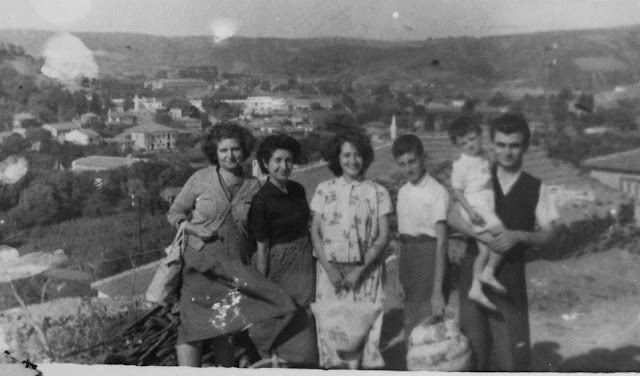MEHMET TUNCER- GÜZEL ŞEHİR İLKELERİ
ESKİ PRAG- ESKİ ANKARA
İnci GÜRBÜZATİK
Sanatım Dergisi, YENİ KİTAPLAR, YENİ UMUTLAR, YENİ BAKIŞ AÇILARI
Ekim-Kasım-Aralık 2021
YIL : 5 Sayı : 20
Şehirlerin
oluşumunda mimarlık, şehir planlama, mühendislik, sanat tarihi, büyük bir rol
oynamış. İnsanlara, doğal güzellikler, estetik değerde sanatsal mimariler,
bahçeler, yaya bölgeleri, kamusal alanlar, yaşanası meydanlar sunmuş. Dünya’nın
pek çok ülkesinde gidip gördüğümüz bizi etkileyen tarihi kentler, işte böyle
insan odaklı tasarlanmış. Kentler, insanlarını hoşnut edip sahiplenirken,
insanlar da onu koruyup kollayarak, sakınarak hoşnut edip yaşatmış.
Prof. Dr.
Mehmet Tunçer’ in “Güzel Şehir İlkeleri” kitabının kapağını ilk gördüğümde
kente dair bir kitap olduğunu anlayıp çok meraklandım o kadar da şaşırdım.
Kitabın adının altında yan yana düşünemeyeceğim iki şehrin Prag ve Ankara’nın
adı vardı çünkü.
“Altın Şehir”, “Masal Şehri”, “Şehirlerin Anası” ve “Avrupa’nın Kalbi” olarak anılan Prag, içinden geçen Vitava nehri üzerindeki muhteşem köprüleri meydanları, kaleleri, katedralleri yazarları ve sanatçıları ile bütünleşen, Avrupa’daki en fazla iç keleye sahip üç şehrinden biridir. Franz Kafka şehre damgasını vurmuş Dünya çapında önemli bir yazardır. Şehir neredeyse onunla anılır. Beş Nobel ödüllü Prag, her yıl milyonlarca turist çeker kendisine. Prag’a pandemiden önce gitmiş, iyi ki görmüştüm. Gören gözün okuması etkili oldu çünkü. Ankara, zaten her yerini karış karış bildiği benim şehrimdi. Şehir ve güzel kavramlarının araştırıldığı, çeşitli şehir modellerinin incelendiği “Şehir İmgesi” ve “Yerin Ruhu” “Genius-Loci”’nin de değerlendirildiği kitapta Unesco Dünya Mirası Prag ile Binlerce yıllık kültür birikimiyle Türkiye Cumhuriyetinin Başkente Ankara ele alınıyordu.
Bu yüzden Prof. Dr. Mehmet Tunçer’in kitabını, bildiğim iki şehrin birbiriyle nasıl ilişkilendirdiğinin merakıyla okudum. Mehmet Tunçer çok yönlü bir profesör, Şehir plancı, kentsel tasarımcı, restorasyon, şehircilik, kentsel koruma, tarih ve doğal çevre koruma uzmanı olarak Prag dan yola çıkarak Ankara için özellikle eski Ankara, Ulus için bazı planlama, projelendirme, uygulama önerilerinde bulunuyor. Prag’da yaptığı incelemeler, çalışmalar, araştırmaların ışığında kendi yaşadığı kent olan Ankara için bir şehir uzmanı olarak çok değerli, üstelik haklı, uygulanabilir öneriler sunuyor. Etkilenmemek, hayıflanmamak, üzülmemek elde değil. Bu projeleri kentte söz sahibi olan yetkiyi elinde bulunduran, erk sahibi yöneticilerin kesinlikle duyması gerek. Hayali değil çünkü.
Karar verici
yöneticilerin Ankara için özveriyle ve sorumlulukla çalışan Prof. Dr. Mehmet
Tunçer ve onun gibi çok değerli bilim insanlarının düşünce görüş ve önerilerine
kulak vermeleri kesinlikle gerekli. ‘Prag’dan
alınacak pek çok ders var ‘diyor Mehmet Tunçer. Daha başka çok önemli
şeyler de söylüyor kitabında kesinlikle okuyun. Çok güzel, kapsamlı ve uzun
yıllara dayalı çalışmalar, gözlemler, araştırmalar, tasarımlar yapmış çünkü.
Bir şehri oluşturan “Güzel Şehir İlkeleri” ne dair bilmediğim öyle çok şey
öğrendim öğrendikçe kahroldum ki. Güzel, estetik, korunmuş, yaşanabilir, yeşil
bir şehir, kitabın ele aldığı ilk konu, gerisini siz anlayın. Daha ilk konu ile
okurunu heyecanlandıran bir kitaptan söz ediyorum. Prag’ dan alınacak bazı
dersler var elbette ve güzel şehirlerin de ilkeleri olmalı. İlkesiz olmuyor
görüyoruz işte.
Prof. Dr.
Mehmet Tunçer’in, Dünya Mühendislik ve Şehir Planlama Sempozyumu (WMCAUS)’da,
hem ‘Bilim Kurul’unda, hem de Kurumsal olarak Çankaya Üniversitesinin, Bilimsel
Partner olarak yer alması, kuşkusuz bu kitabın ardındaki gözlem, bilgi birikimi
ve araştırmayı gözler önüne seriyor. Yoğun bir çaba, gözlem, arşiv araştırma ve
bir de emek içeren yazım süreci yaşanmış olmalı.
Şehir
imgesi, şehir estetiği, şehrin korunması önemli kavramlar. Önemli olan Prof. Dr
Mehmet Tunçer’in sesini duyurabilmesi, önerilerinin önemsenmesi ve elbette
Ankara’da uygulanırlığı. Hepimiz adına, bu kentte yaşayan herkes adına sunuyor
önerilerini ve hepimiz adına, gelecek kuşaklar adına istiyor Ankara için “Güzel Şehir İlkeleri”ni. İlkeliliği sağlayan Prag
gibi şehirler işte o yüzden hayranlık uyandırıyor.
Bir şehir yaşayan insanlarından aidiyet ister. Aidiyet köktür bir bakıma. Baskın bir histir aidiyet ve kent için de insan için de önemlidir. Ait olmak benimsemektir o şehri değerli kılan duygudur. Biz Ankara için o hissi duyuyoruz, Ankara Prag’a benzemiyor diye kentin varlığına küsecek değiliz. Yüzlerce yıllık binaları korunmamış, bulvarları, meydanları, köprüleri yok edilmiş, hala da ediliyor diye Ankara’yı Prag ile kıyaslayacak da değiliz elbet. Ankara bir ulusun yoktan var oluşunun simgesi bir şehir. Benim şehrim, bizim şehrimiz, tarihiyle, geçmişiyle, güzellikleriyle bizim gözbebeğimiz, Hiç bir kente değişmem.
Çok güzel öneriler, heyecan verici projeler ve tasarımlar
var eski Ankara’ya dair. Sahip olduğu zengin insan kaynakları bir kentin
gururudur. Prof. Dr Mehmet Tunçer de benim gözümde onlardan biri. Keşke kitabı çok okunsa, Prof. Dr. Mehmet Tunçer’in sesi
duyulsa, önerileri gerçekleşip kentimiz ışıl ışıl parlasa Ankara korunsa.
Ankara’yı seviyorum diyenlerin-Prag’ı görmüş de olsalar benim gibi-
kesinlikle okuması gereken değerli bir kitap” “Güzel Şehir İlkeleri. Eski
Prag-Eski Ankara”









































